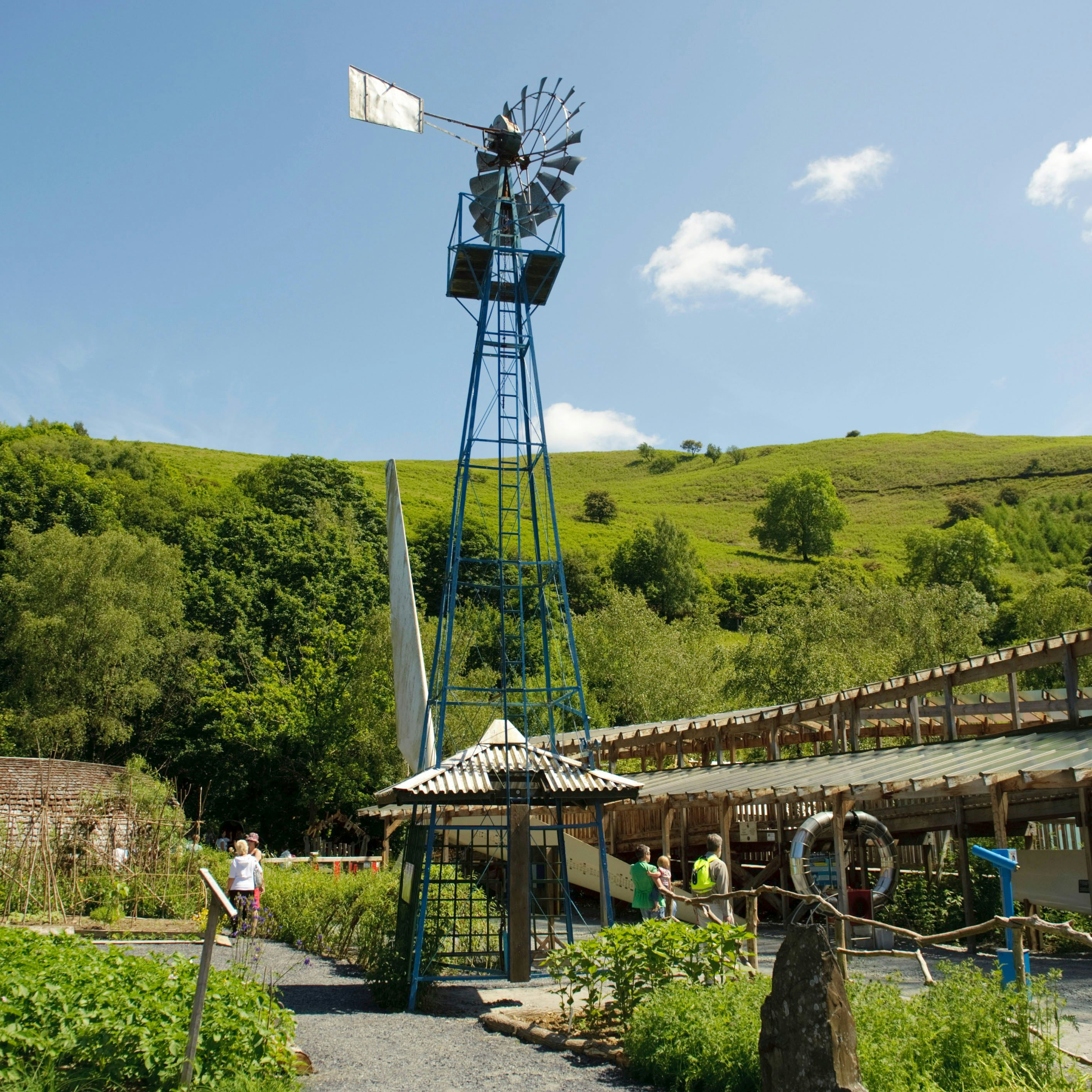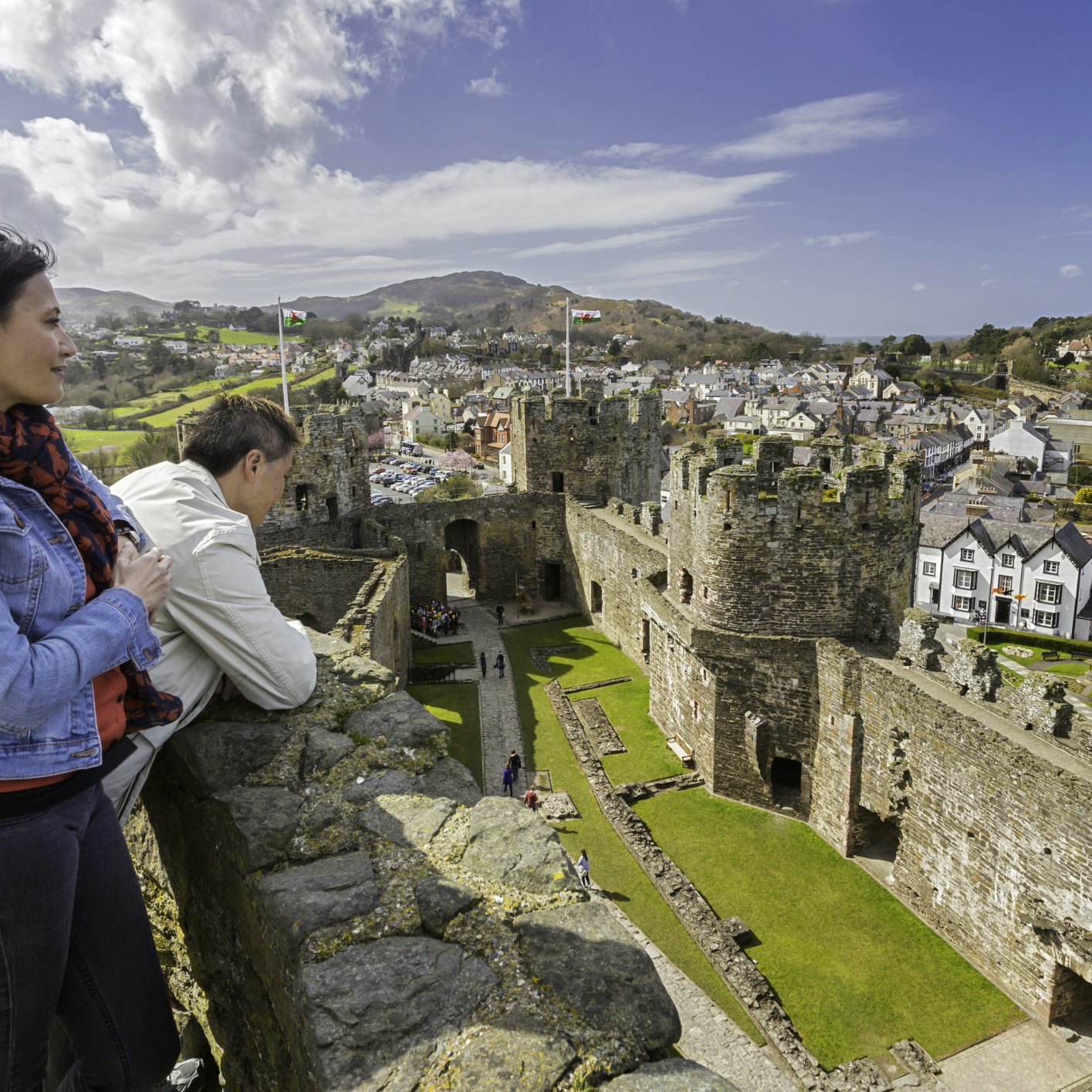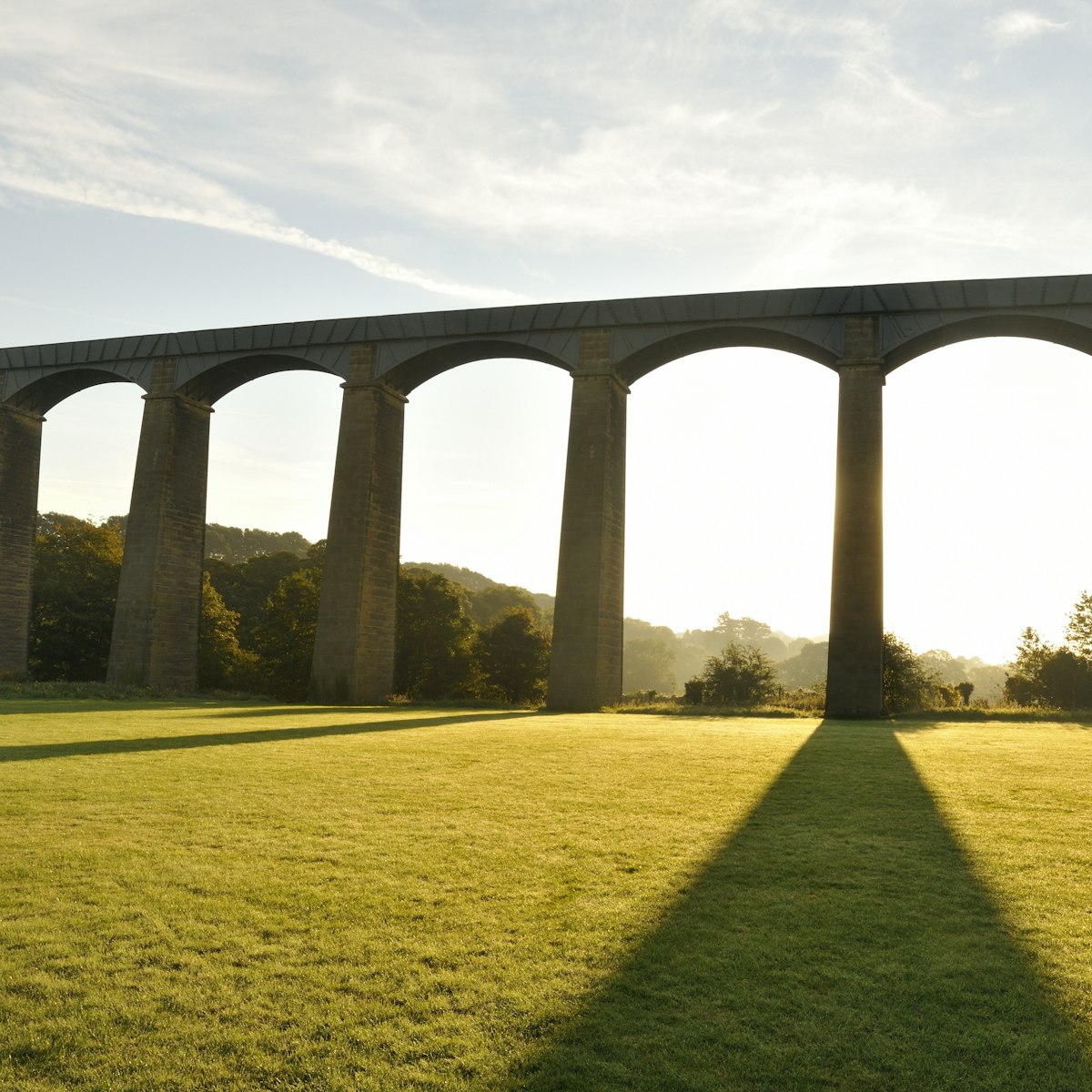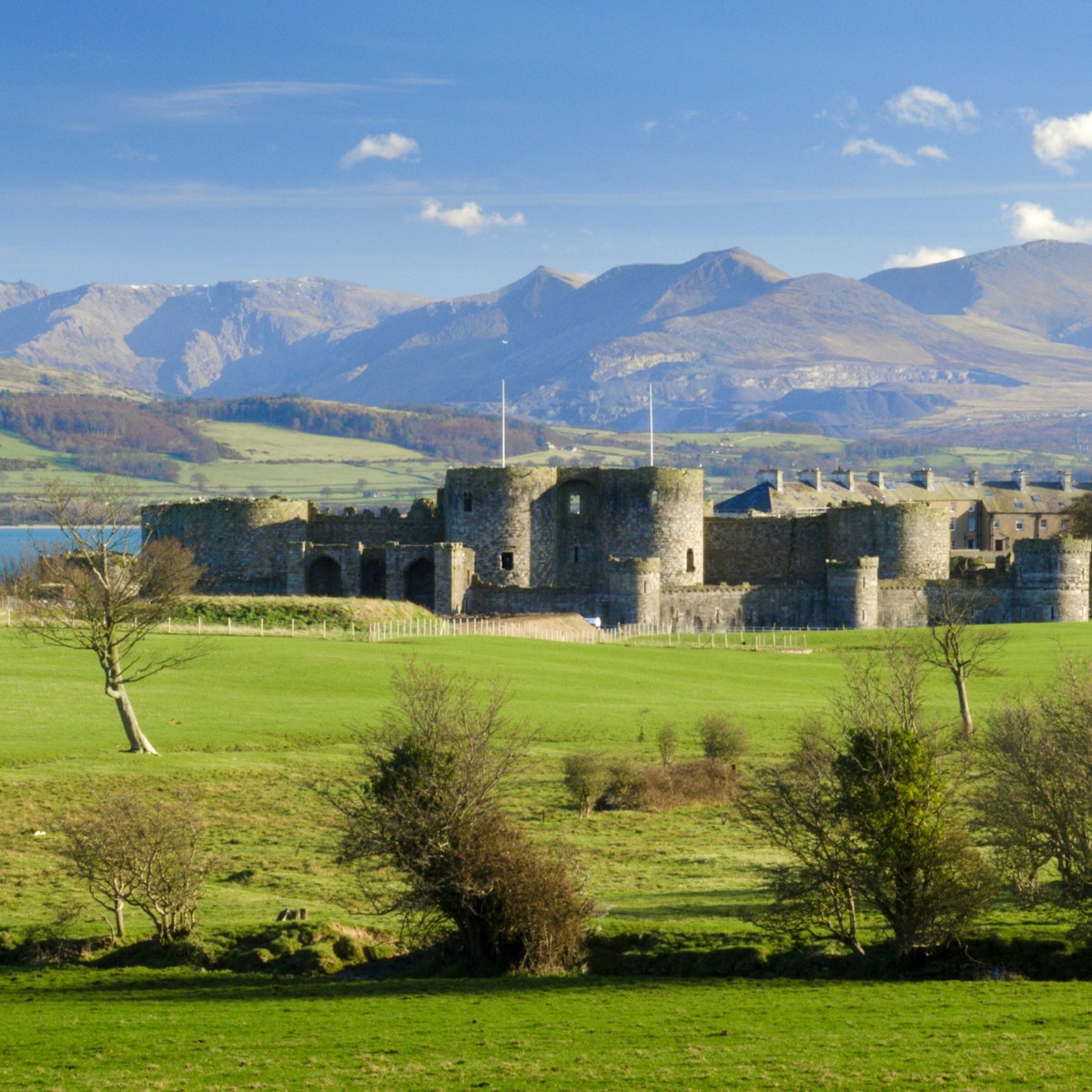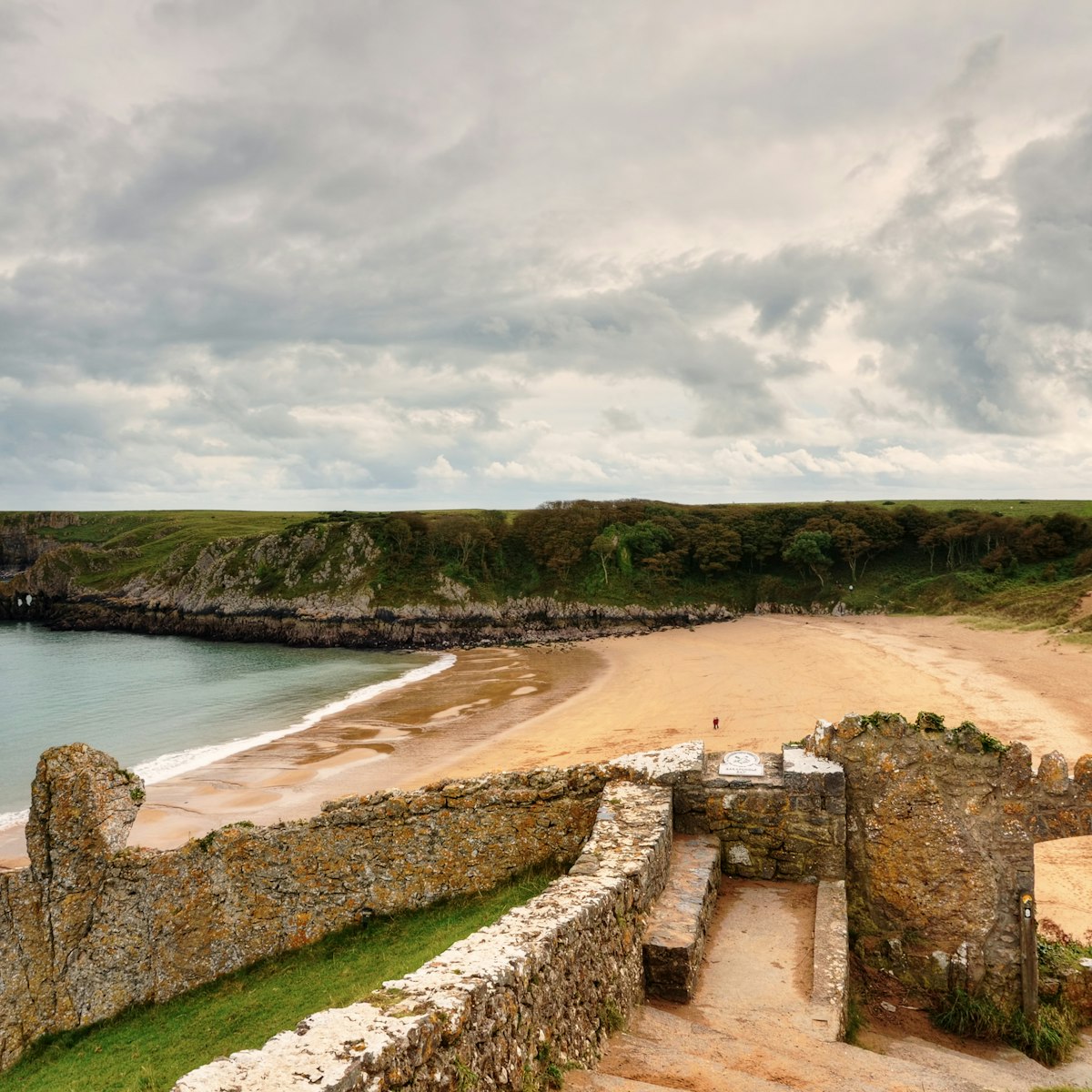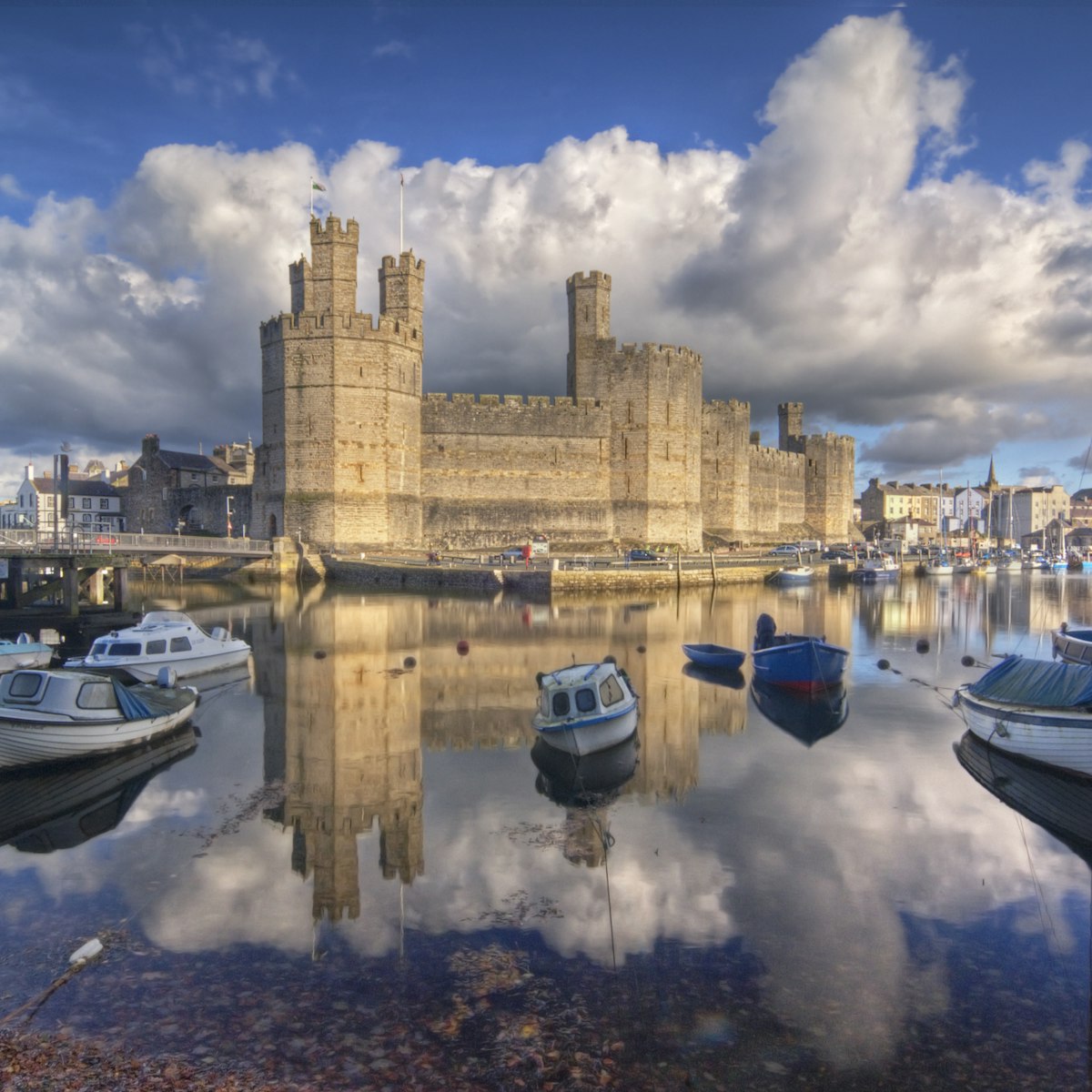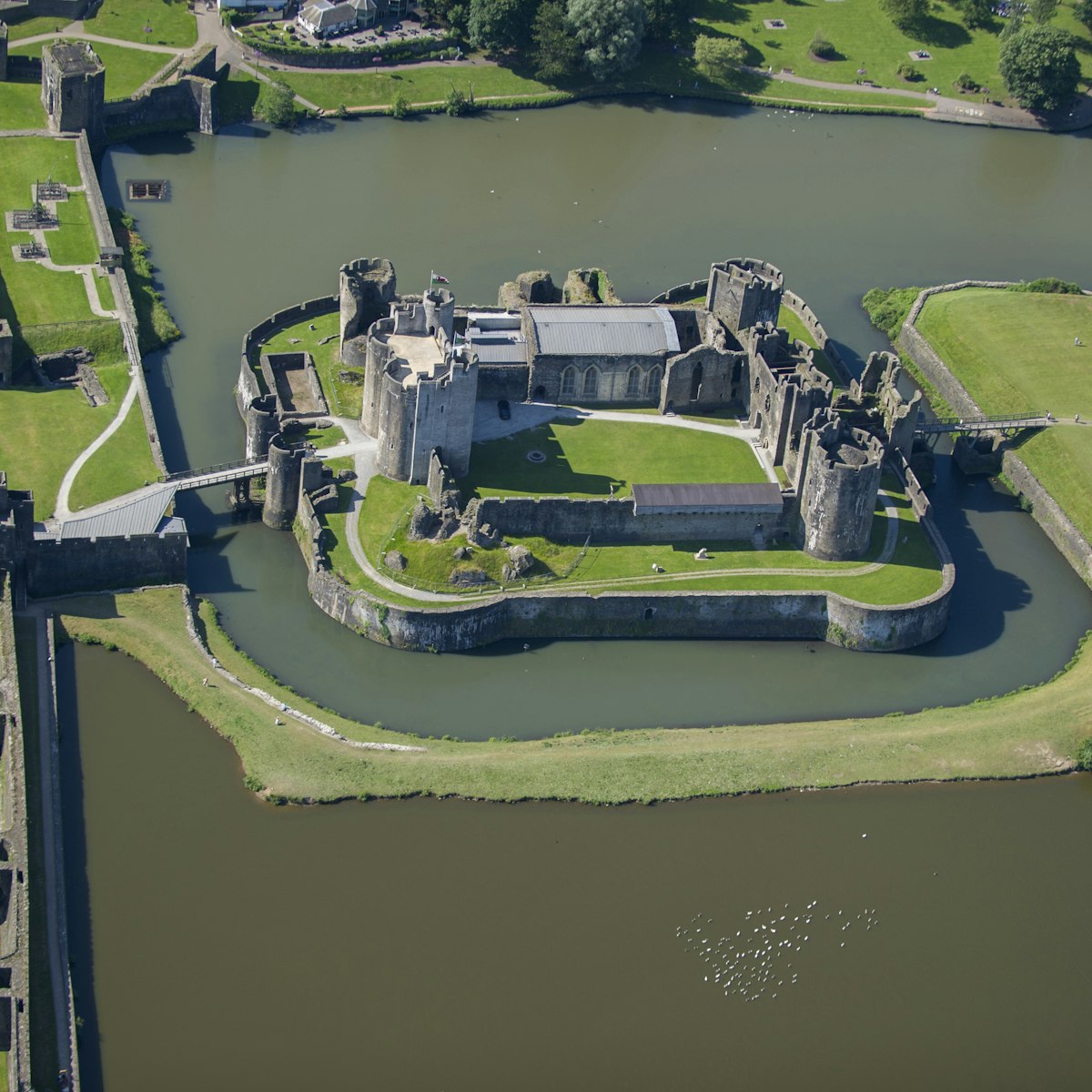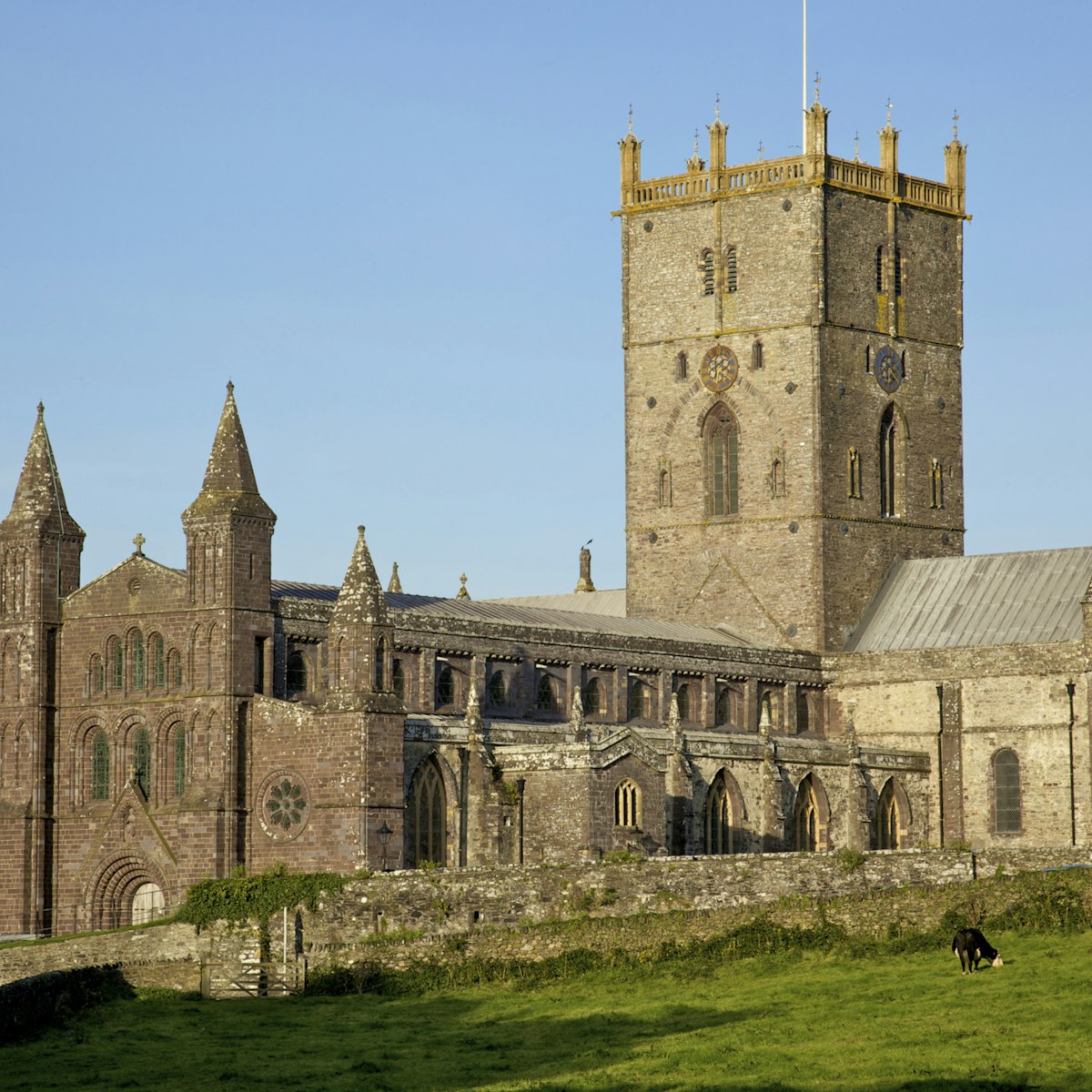
Hidden in a hollow and behind high walls, St David's Cathedral is intentionally unassuming. The valley site was chosen in the vain hope that the church would be overlooked by Saxon raiders, but it was ransacked at least seven times. Yet once you pass through the gatehouse separating it from the town and its stone walls come into view, it's as imposing as any of its contemporaries.
Built on the site of a 6th-century chapel, the building dates mainly from the 12th to the 14th centuries. Extensive works were carried out in the 19th century by Sir George Gilbert Scott (architect of London's Albert Memorial and St Pancras) to stabilise the building. The distinctive west front, with its four pointed towers of purple stone, dates from this period.
The atmosphere inside is one of great antiquity. As you enter the nave, the oldest surviving part of the cathedral, the first things you'll notice are the sloping floor and the outward lean of the massive, purplish-grey pillars linked by semicircular Norman Romanesque arches, a result of subsidence. Above is a richly carved 16th-century oak ceiling, adorned with pendants.
At the far end of the nave is a delicately carved 14th-century Gothic pulpitum (screen), which bears a statue of St David dressed as a medieval bishop, and contains the tomb of Bishop Henry de Gower (died 1347), for whom the Bishop's Palace was built.
Beyond the pulpitum is the magnificent choir. Check out the mischievous carved figures on the 16th-century misericords (under the seats), one of which depicts pilgrims being seasick over the side of a boat. Don't forget to look up at the colourfully painted lantern tower above (those steel tie rods around the walls were installed in the 19th century to hold the structure together).
Between the choir and the high altar is the object of all those religious pilgrimages: a shrine containing the bones of St David and St Justinian. Destroyed during the Reformation, it was restored and rededicated in 2012, adorned with five new Byzantine-style icons by artist Sara Crisp.
Accessed from the north wall of the nave, the Treasury displays vestments and religious paraphernalia crafted from precious metals and stones. Just as valuable are the treasures in the neighbouring library (entry £1), the oldest of which dates to 1505.
Towards the rear of the cathedral is the low-lit Holy Trinity Chapel, distinguished by a superb fan-vaulted ceiling dating from the early 16th century, and the light-filled Lady Chapel.
Lord Rhys ap Gruffydd, the greatest of the princes of South Wales, and his son Rhys Gryg are known to be buried in the cathedral, although their effigies in the south choir aisle date only from the 14th century. Gerald of Wales, an early rector of the cathedral, has a gravestone here, but scholars suggest he is actually buried at Lincoln Cathedral.
In August there are hour-long guided tours at 11.30am Monday and 2.30pm Friday; at other times, tours can be arranged in advance.
 Publish for free
Publish for free

 zzdtravel
zzdtravel



